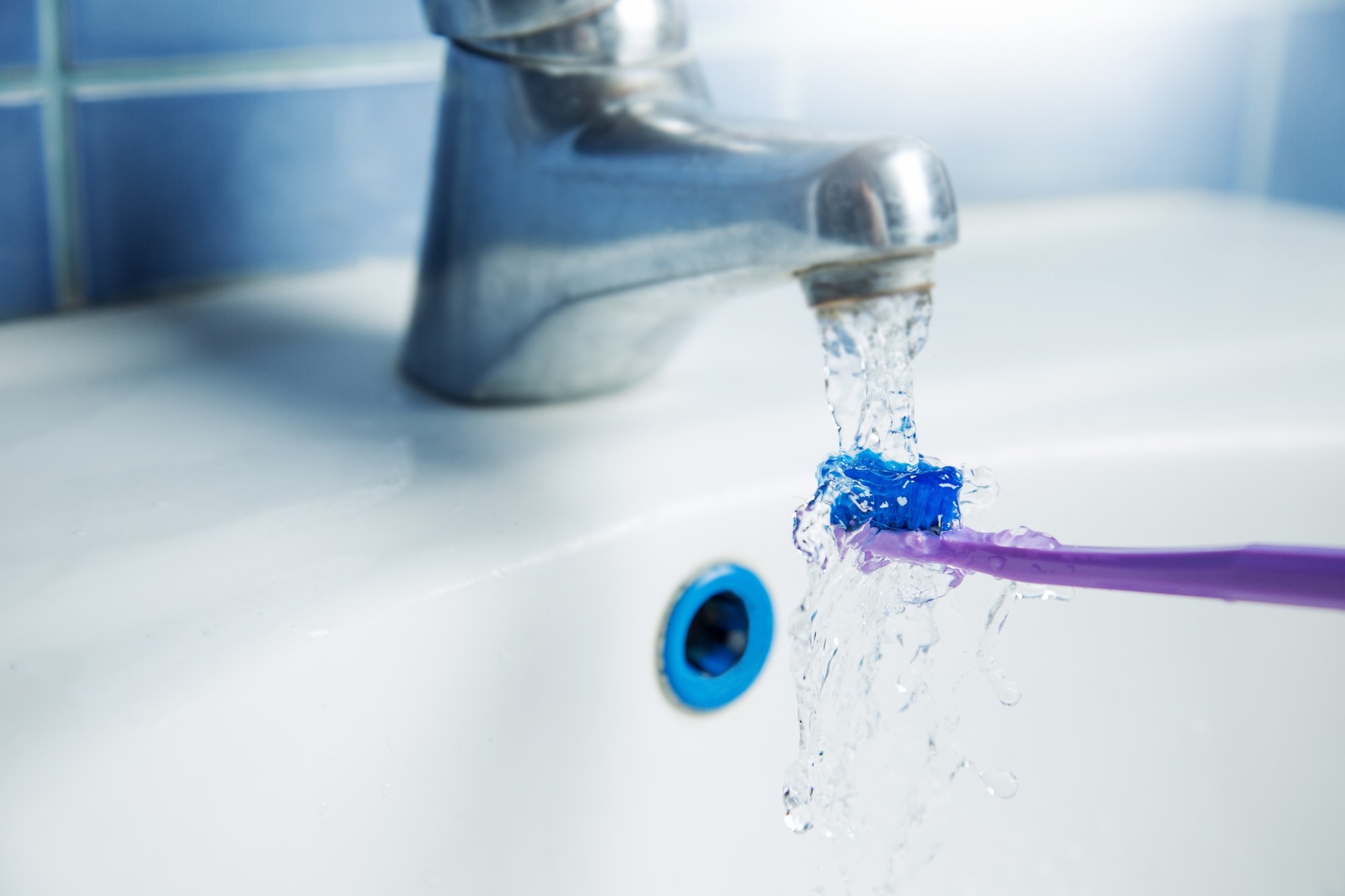In a recent Morbidity and Mortality Weekly Report (MMWR), researchers analyzed monthly data from the Centers for Disease Prevention and Control (CDC)’s Water Fluoridation Reporting System (WFRS) for 2016-2021 to ascertain whether drinking water fluoridation levels, measured in mg/l, achieved oral health benefits and minimized the risks implicated with excessive fluoride exposure per the United States Public Health Service (USPHS) recommendations.
 Study: Community Water Fluoridation Levels To Promote Effectiveness and Safety in Oral Health — United States, 2016–2021. Image Credit: novak.elcic / Shutterstock
Study: Community Water Fluoridation Levels To Promote Effectiveness and Safety in Oral Health — United States, 2016–2021. Image Credit: novak.elcic / Shutterstock
Background
In the U.S., nearly one in four children living below the poverty line suffer from dental caries, a common chronic condition preventable by limiting fluoride exposure. Under the supervision of the CDC, WFRS keeps a track record of water system populations on a monthly, quarterly, and yearly basis; accordingly, WFRS updates it periodically or annually with data provided by states and Environmental Protection Agency (EPA) Drinking Water Information System, respectively.
Water systems that fluoridate community drinking water provide data on monthly average fluoride levels in mg/l. Per USPHS recommendations, monthly average fluoride levels of 0.7 mg/L are optimal for dental caries prevention, albeit any value ≥0.6 mg/L is effective.
Water systems that optimally fluoridate water require routine maintenance and monitoring to protect against equipment dysfunctions, issues with fluoride supply, and frequent system shutdowns. Nonetheless, these systems ultimately reduce tooth decay in nearly 25% of affected children and adults. On the other hand, suboptimal water systems that maintain fluoride concentrations <0.6 mg/L do not effectively support the oral health of their communities.
Furthermore, EPA has set a safety standard of two mg/L of monthly average fluoride levels, the secondary maximum contaminant level (SMCL). Water systems maintaining average fluoride levels under SMCL could prevent dental fluorosis in children, a disease that changes the appearance of tooth enamel in children below eight years due to hypermineralization resulting from excessive fluoride intake.
About the study
In the present study, researchers examined the performance of U.S. water systems reporting fluoride levels from the perspectives of preventing caries and supporting USPHA-established safety standards.
To this end, they computed the population-weighted monthly fluoride levels in person-months by multiplying the average monthly fluoride level by the population catered to by each water system. Furthermore, the researchers monitored 54,000 WFRS water systems, of which 5,888 adjusted fluoride levels supplied water to >200 million people. They directly supply water to the 145M population and an additional 55M through water systems that buy fluoridated water from adjusted water systems. Thousands of fluoride-adjusting community water systems reach ~200 million U.S. population.
Results
During 2016–2021, fluoride measurements for 16.3% of population-weighted monthly fluoride levels reported by community water systems to WFRS were less than 0.6 mg/L; accordingly, only 0.01% of person-months exceeded 2.0 mg/L, the EPA-specified SMCL. Minimizing SMCL exceedances further could reduce dental fluorosis in children, as described above. The remaining 80% of population-weighted fluoride measurements reported to WFRS were above 0.6 mg/L, effective for caries prevention but below the recommended optimal level of 0.7mg/ml.
Water fluoridation furthers health equity by reducing caries, reducing healthcare financial burden on families, and being readily accessible. Healthy People 2030 is an ongoing initiative that increased access to optimally fluoridated water systems by up to 77.1% in 2018 to improve overall population health. Other nationwide programs also saved $6.5 billion annually in dental treatment costs, e.g., tooth extractions and indirect costs levied by follow-up treatment and productivity losses.
In Juneau, Alaska, authorities ceased fluoridation, which increased the number of dental caries-related methods among children and adolescents aged <18 years, signifying the long-term oral health benefits of fluoridated water access.
CDC carefully and regularly monitors research on the benefits and risks of fluoride exposure to make evidence-based recommendations. It continues to emphasize the community water fluoridation level of 0.7 mg/L for dental caries prevention in the U.S. Further, it diverts resources to serve communities where fluoride measurements were <0.6 mg/L to promote the benefits of community water fluoridation and meet the prespecified USPHS 0.7 mg/L recommendation.
Conclusions
Overall, 4,080 community water systems safely fluoridated water 99.99% of the time, with levels below the secondary safety standard of 2 mg/L specified by EPA. To date, access to optimally fluoridated water remains the safest and most successful method for reducing dental caries and their associated costs for communities and families.
Thus, it remains crucial to motivate water systems to collaborate with their state programs to provide monthly average fluoride levels data to WFRS and ensure it meets the USPHS recommendations to confer the benefits of adequate fluoridation for dental caries prevention.
